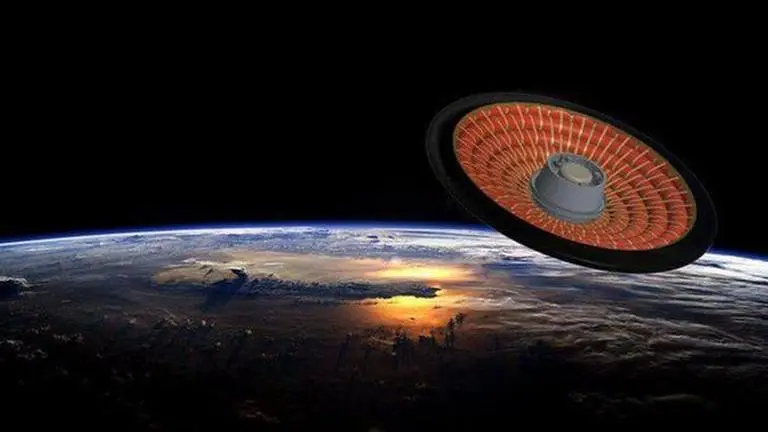Updated 30 October 2022 at 16:44 IST
NASA's next mission to carry cremated remains of late engineer in his honour; details here
NASA will launch the LOFTID mission at 2:55 pm IST on November 9 from the Vanderberg Space Force Base in the US state of California.
- Science News
- 2 min read

NASA’s next mission on November 9 to test an inflatable heat shield will honour its late engineer Bernard Kutter in a unique style. Named Low-Earth Orbit Flight Test of an Inflatable Decelerator (LOFTID), the mission would carry the cremated remains of Kutter, who died at the age of 55 in August 2020. It is a demonstration mission that would test the inflatable heat shield which could one day help in the development of the technology to aid landings on Mars.
NASA’s Bernard Kutter Low-Earth Orbit Flight Test of an Inflatable Decelerator, or LOFTID, could one day help land humans on Mars! @NASA is inviting media to see it inflated for the final time on Earth before its spaceflight demonstration.
— NASA_SLS (@NASA_SLS) June 9, 2022
MORE >> https://t.co/xy3Vrn8CcH pic.twitter.com/Wa2pRRWuPd
About the LOFTID aeroshell
The aeroshell is made of an inflatable structure and flexible thermal protection system, constructed from advanced materials with high-temperature limits, says NASA. It uses the Hypersonic Inflatable Aerodynamic Decelerator (HIAD) technology and an inflatable heatshield gives the advantage of being packed to a very small size and then deployed to a scale larger than the rocket’s fairing.
(Fully inflated LOFTID; Image: NASA)
The launch is targeted no earlier than November 9 aboard a United Launch Alliance (ULA) Atlas V rocket from the Vanderberg Space Force Base in California, US. The heat shield will be sent to space as a secondary payload with National Oceanic and Atmospheric Administration’s (NOAA) Joint Polar Satellite System-2 (JPSS-2). After separating from the rocket’s upper stage, LOFTID will inflate demonstrating its ability to safely descend through the atmosphere carrying large payloads – such as crewed spacecraft, robotic explorers, and rocket components and protect them from atmospheric heat.
Advertisement
More about Bernard Kutter
(Bernard Kutter; Image: NASA)
Kutter is remembered as an advocate for technologies like LOFTID that can lower the cost of Space access. Moreover, he is also said to have a keen interest in NASA’s inflatable heat shield design which could enable the safe return of rocket engines for re-use and a safe landing of payloads on Mars.
Advertisement
“Bernard was the cornerstone of ULA’s Advanced Programs team, shaping the future of Space technology and sharing that vision with many inside and outside of ULA,” said Tory Bruno, ULA’s president and CEO, in an official statement. “His influence can be seen everywhere from the Vulcan Centaur design to NASA’s lunar architecture. He is greatly missed.” Neil Cheatwood, LOFTID principal investigator also said, “Bernard advocated for us everywhere. I think the LOFTID project would not have happened without Bernard, and that's one of the reasons the dedication is for him."
Image: NASA
Published By : Harsh Vardhan
Published On: 30 October 2022 at 16:37 IST


